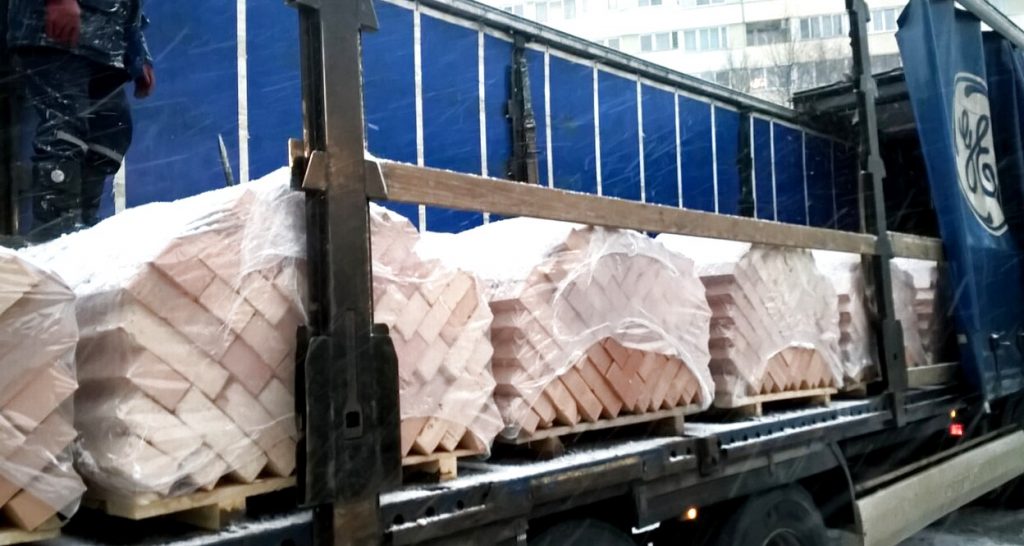Home
Aerated concrete or porous brick?

The question of choosing between aerated concrete and porous brick is asked by almost all customers. Some people look for some advertising trick in this choice out of habit, while others are simply lost among the various conflicting information on the Internet. However, this choice contains no pitfalls or clear answers that everyone hides from consumers.
The main properties of wall materials are their strength and ability to retain heat (thermal insulation).
Porous bricks are slightly stronger than aerated concrete, but with an external bearing wall thickness of 30 cm (SNiP does not allow anything thinner), any wall block (or brick) also provides several significant margins of safety. And for houses whose walls are constructed of masonry materials (blocks, bricks), monolithic belts are also required. At the same time, aerated concrete is about 33% warmer than porous brick.
Unfortunately, it is difficult to give definite recommendations regarding the choice of wall material. But collecting objective information makes decision making easier. In general, aerated concrete is focused on economical construction. Aerated concrete is 20-40% cheaper than porous brick and offers similar wall properties and vapor permeability. Bricks should be perceived as more focused on “brick lovers” who can afford it (brick homes are “cool” after all). There really isn’t anything wrong with bricks, except that they are relatively expensive.
Aerated concrete is permeable to steam, but brick is not. If you make walls of aerated concrete, insulate the facade with basalt wool, and use gypsum as the finishing of the facade, then the whole wall will “breathe” (of course, not like a wooden house breathes, but still). Bricks, on the other hand, are compatible with airtight facades (clinker tiles, facing bricks) without ventilation gaps. Water vapor does not enter from the inside.
Prices for aerated concrete and ceramic blocks from reliable manufacturers are about the same. Aerated concrete is laid on a thin layer of glue, and bricks on a thick layer of mortar, which also contributes to the increased cost of masonry. Also, the cost of the brick work itself is slightly higher. In some cases, the price difference reaches 40-50% per square meter of wall.
Brick vs Aerated Concrete: Who Wins
It is difficult to make the ideal material. if you can. Each existing one has its own strengths and weaknesses. However, if you use it wisely, you can combine the disadvantages and maximize the advantages.
Today’s review will cover popular materials such as brick and aerated concrete. Let’s see who wins!
Brick and aerated concrete: a matter of choice

Brick is still the oldest building material popular all over the world. In the early 19th century, bricks were made by firing clay, first with wood and then with coal, but today they are made in gas furnaces. But Wienerberger, one of his oldest brick manufacturers, Hoffmann’s coal ring kiln still fires hand-formed face bricks. By the way, the approach is the same as 108 years ago.
Let’s not open the Americas and list the absolute benefits of ceramic building materials. It is durable, frost-resistant, resistant to moisture and wind, and as a result is particularly durable. Its service life is more than 100 years.
Bricks have so many advantages. First of all, the brick façade is fine, sturdy and can be used for a long time. Secondly, bricks are resistant to precipitation and other negative influences. And finally, they emphasized to us at Braer, which manufactures European quality ceramics, that they are designed to work flawlessly for a long time.
Aerated concrete – a fairly young material when compared to brick. It is a man-made limestone. It’s only been 80 years since the manufacturing technology was known. It originated in Sweden first. It was then taken over by a German manufacturer. In Russia, after the Second World War, the production of aerated concrete began. Indeed, in Soviet times he failed to seriously master the construction market. It was only in the last few decades that he was truly recognized.
To date, the technology for producing aerated concrete has advanced much further. Its performance has improved significantly. It is now produced on a dedicated line with very high geometric accuracy of the blocks. With state-of-the-art factories such as XELLA (YTONG brand), a manufacturer with years of experience, the product manufacturing accuracy is + – 1 to 2 mm. This allows the aerated concrete block to be attached to a special glue rather than a cement-sand mortar.